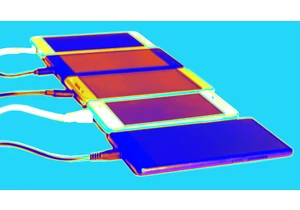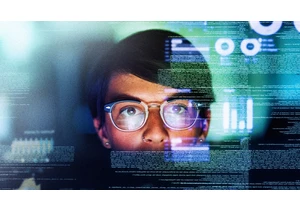If we had an hour together, we could talk about the many ways robotics and automation are rocking our universe, in implementations ranging from manufacturing and fulfillment to food packaging and preparation. But one of the most surprising targets on the list is healthcare.
The healthcare industry is at a critical juncture. While healthcare costs are rising to historic levels, the population of individuals whose needs are highest and are aging out of the workforce is growing even faster. Healthcare organizations at all levels are suffering from increased workloads, poor retention, and rising operational costs. In arenas ranging from telehealth to home health and hospital support, robotics can provide new alternatives. Instead of burnout and churning of staff, it can offer more clinical precision, fewer possibilities for human error, and improved efficiency across the spectrum of healthcare delivery.

The Healthcare Innovation Framework, provided by Don Capener, Strategy Lead, Chang Robotics
These innovations span clinical, administrative, and logistical functions from all varieties of operation, signaling a paradigm shift in the ways health services are provided.
Cobots
The most familiar realm is the use of surgical robotics to enable minimally invasive procedures with higher precision, and shorter and easier patient recovery times. Meanwhile, collaborative robots (cobots) are gaining traction as essential tools in addressing physical labor burdens and staff shortages.
Cobots represent a critical solution to labor shortages and the physical strains on healthcare workers, which is increasingly important: A 2021 survey by the American Medical Association found that nearly 50% of healthcare workers reported significant burnout.
Cobots can work alongside humans to handle physically demanding tasks like patient lifting, transporting medical supplies, and inventory sorting. They not only reduce the physical toll on healthcare professionals but also mitigate the risk of injuries, which cost U.S. hospitals more than $20 billion annually in compensation and lost productivity.
Based on our recent installations we predict a cobot system could result in in a 15% reduction in workplace injuries and 25% decrease in staff turnover over a 2-year period. Additionally, the automated system reduced the time healthcare workers spent on manual tasks by 30%, allowing staff to prioritize clinical care.
Autonomous information systems driven by AI are becoming increasingly important in healthcare administration as well. These systems handle routine but critical tasks such as scheduling, data entry, and inventory management. According to a Medscape survey, 62% of physicians cite administrative tasks as the top contributor to burnout. However, a recent McKinsey & Company report suggests that automation can reduce time spent on administrative tasks by 36%, leading to more efficient healthcare delivery.
Financial considerations
Our clients have found that investing in a robotic or cobotic system has immediate payback, which can be additionally enhanced over time with financial optimization around billing and revenue. Early adopters are reporting the ability to achieve a two-year payback.
As these technologies become more prevalent, of course, manufacturing efficiencies will drive costs down. Innovative financing models are emerging to make cobots more accessible to smaller healthcare facilities. Governments and healthcare systems can collaborate to develop financing models to make these technologies more widely available as well. Also influencing the payback: New research is showing that cobotic implementations can reduce manual task time by as much as 30%, while also reducing injury costs and turnover.
What are the barriers and concerns?
Of course, the adoption of robotics and AI in healthcare raises important regulatory concerns. Issues such as patient privacy, data security, and the potential displacement of human workers are vital. The increase in autonomous systems also raises questions of accountability: Who is responsible when a robotic system malfunctions or makes an error? Regulatory bodies are developing frameworks to ensure these technologies are used responsibly and that patient data is safe.
As to displacement of human workers, early implementations are showing the displacement of workers to be largely offset by the need for workers more fully able to manage the functions influenced by automation, resulting in career growth opportunities.
In all, the integration of robotics and automation into healthcare is not a future prospect—it is well underway. By 2030, the healthcare robotics industry across all sectors is projected to reach nearly $45 billion, with significant growth in areas such as robotic diagnostics, AI-driven healthcare management, and precision surgery—areas where these technologies offer practical solutions to some of the industry’s most pressing challenges including labor shortages, worker burnout, and rising operational costs.
From all indications the successful adoption of these technologies will lead the healthcare industry to increasingly higher success in achieving more efficient, patient-centered care. It will also help operations and practitioners to achieve the financial results they need to succeed in the current healthcare industry, and can lay the groundwork for even greater success in the years (and decades) to come.
Matthew Chang is cofounder and principle engineer for Chang Robotics.
Login to add comment
Other posts in this group


Welcome to the world of social media mind control. By amplifying free speech with fake speech, you can numb the brain into believing just about anything. Surrender your blissful ignorance and swall

Few periods in modern history have been as unsettled and uncertain as the one that we are living through now. The established geopolitical order is facing its greatest challenges in dec

Substack and Patreon are vying to become creators’ primary revenue stream.
For most influencers, payouts from platforms like Meta or Google aren’t enough to build a sustainable career. R

The European Commission is coming for “SkinnyTok.”
EU regulators are investigating a recent wave of social media videos that promote extreme thinness and “tough-love” weight loss advice,

The infamous “Am I The A**hole?” subreddit is making its way to the small screen.
Hosted by Jimmy Carr, the new game show for Comedy Central U.K. will feature members of the public appea

Former employees of OpenAI are asking the top law enforcement officers in California and Delaware to s
